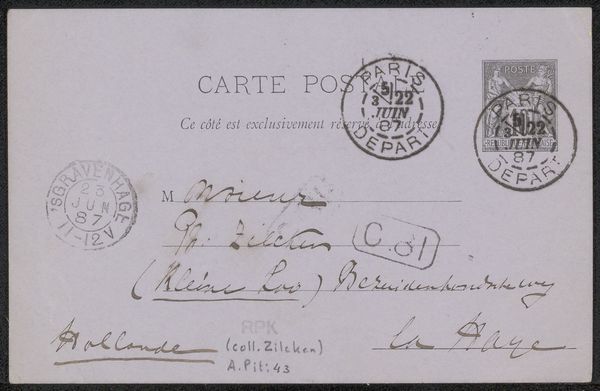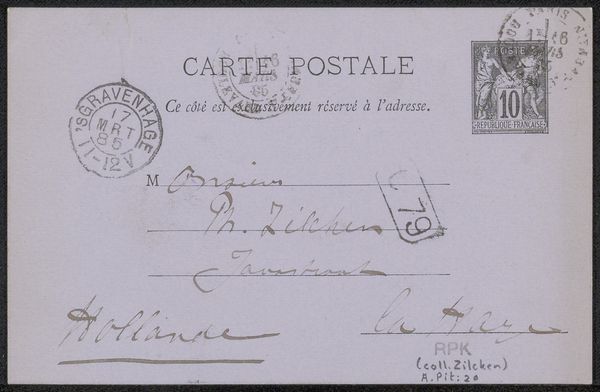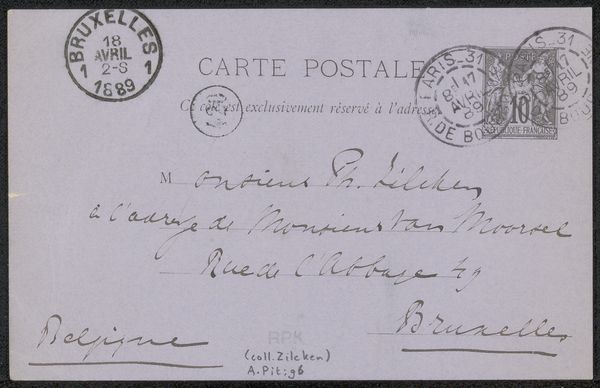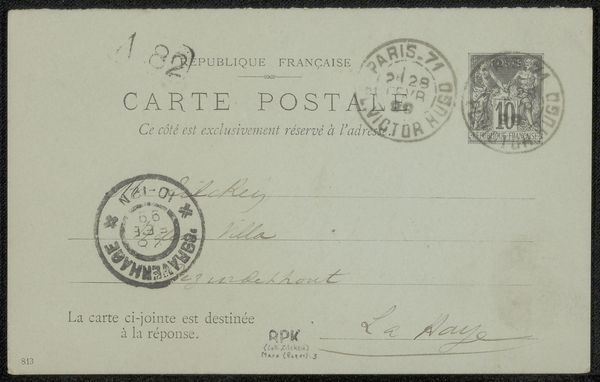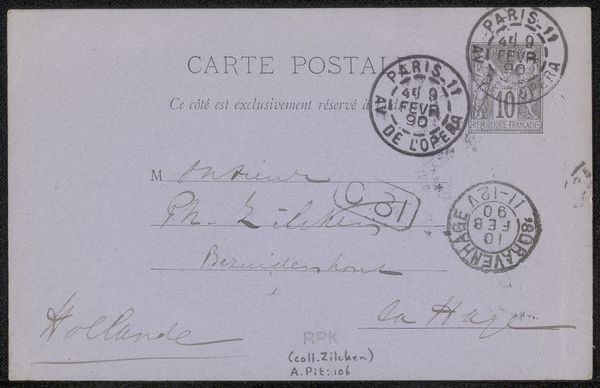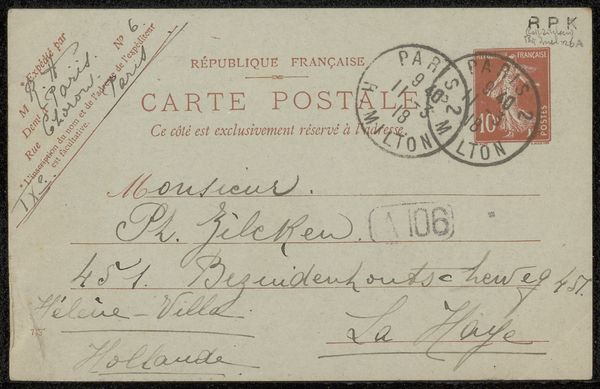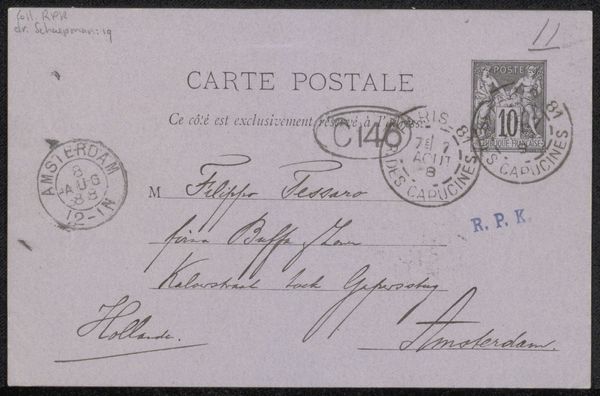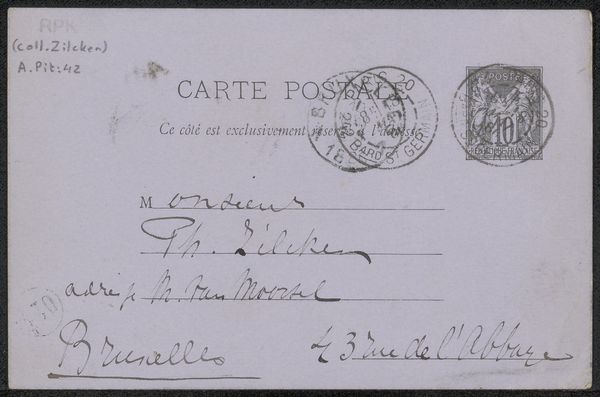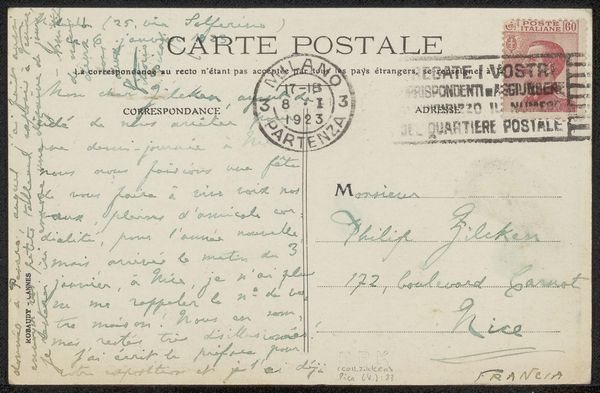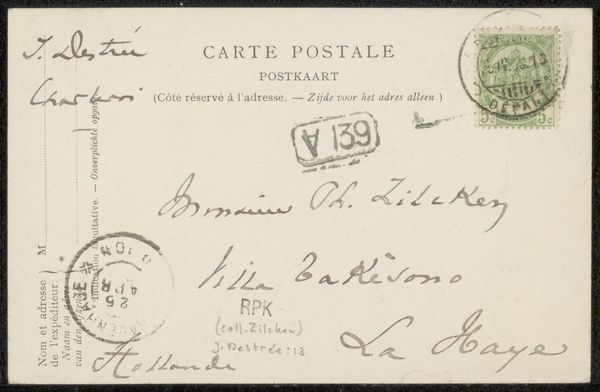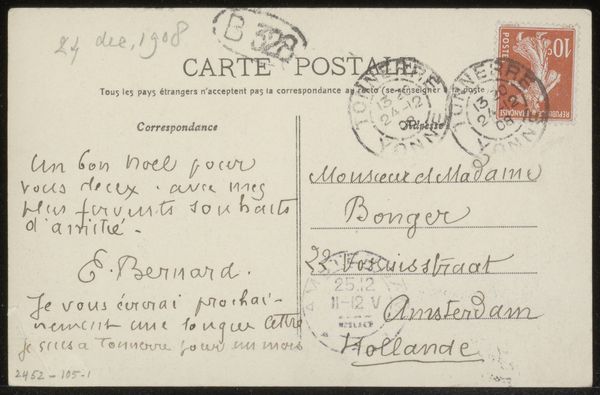
drawing, print, paper, ink
#
portrait
#
drawing
# print
#
paper
#
ink
#
post-impressionism
Copyright: Rijks Museum: Open Domain
Editor: This is a postcard, titled "Briefkaart aan Philip Zilcken," likely from 1887. It’s a drawing and print using ink on paper. I find the presence of postal stamps quite striking; they really root it in a specific moment and place. What stands out to you? Curator: Beyond its face value as correspondence, it's fascinating to consider how seemingly mundane objects like this postcard function as historical artifacts. Its value extends beyond its artistic merit, offering a glimpse into the social networks and cultural exchanges of the time. Editor: Could you elaborate on the social aspect? Curator: Certainly. The act of sending a postcard speaks to a culture of communication, of course, but consider also, who were Adriaan Pit and Philip Zilcken? Exploring their roles within artistic circles could reveal how networks of artists, writers, and critics influenced artistic trends. How did their relationships with institutions like the Rijksmuseum, where this postcard now resides, shape their legacies? Editor: That's a really interesting point. Thinking about it as a record of a relationship within a specific art world context really changes how I see it. Curator: Exactly. Also, examining the postal markings reveals details about the postal system itself – its efficiency, reach, and its role in connecting people across distances. Even the choice of stamp and the handwritten address tell a story. How does this object reflect, or even resist, the established art world hierarchies of its time? Editor: I hadn’t even thought about resistance, but now that you mention it, the casual nature of a postcard could be seen as a contrast to the more formal methods of art communication at the time. Thanks, that gives me a whole new perspective. Curator: My pleasure. Sometimes, the smallest objects offer the most profound insights into the past.
Comments
No comments
Be the first to comment and join the conversation on the ultimate creative platform.
